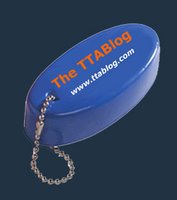TTAB Orders Cancellation of "THE PLIMSOULS" Registration on Ownership and Likelihood of Confusion Grounds, Rejects Abandonment Claim
In another of those battles between a rock band and one of its members, the Board again sided with the band, granting a petition for cancellation of a registration for THE PLIMSOULS for "entertainment in the nature of live performances by a musical band." The Board ruled that the band was entitled to challenge the registration, had not abandoned the mark, and had proved its claim of ownership of the mark and likelihood of confusion based on its prior use of the same mark for the same services. The Plimsouls v. Edward David Munoz, Cancellation No. 92076883 (May 8, 2024) [not precedential] (Opinion by Judge Michael B. Adlin).
"The Plimsouls" band was formed in California in 1979 with four band members, Respondent Munoz being one of the four equal partners. After their "heyday" in the early 1980’s, the Plimsouls had alternating periods of activity and inactivity: "typical of bands that last as long as ours has,” said Peter Case. During its breaks from performing, the band continued to release recordings in new digital formats including compact disc and electronic downloads, licensed its music for streaming, managed its copyrights, and collected royalties.
Entitlement to a Statutory Cause of Action: The Board observed that a band is entitled to seek cancellation of a registration for its own name, "especially when that registration is owned by another performer that plays not only the same type of music but the same exact songs." Respondent Munoz asserted that the petitioner had failed to provide any evidence that it was a legal entity, but the Board pointed out that under California law, "the association of two or more persons to carry on as co-owners a business for profit forms a partnership, whether or not the persons intend to form a partnership." Moreover, "[a] person who receives a share of the profits of a business is presumed to be a partner in the business."
In short, Petitioner has used THE PLIMSOULS for live musical performances over the years, plans to continue doing so, and in any event has been an ongoing for-profit concern (partnership) that has collected royalties on its songs and recordings for the last 40+ years. There is no evidence that the Plimsouls partnership ever dissolved. The band is entitled to request cancellation of the involved registration for its name.
Abandonment: The Board framed the question as "whether the continued sale and streaming of Petitioner's recorded music throughout these periods would lead consumers encountering another 'Plimsouls' group performing live, such as Respondent's, to perceive Respondent’s group as originating from the same source as Petitioner’s band."
Respondent Munoz argued that Petitioner abandoned the mark because "none of the members of The Plimsouls besides [Respondent] have performed live under that name since 2007 and they have not engaged in any commercial activity at all with respect to the mark since they released an album in 2012." The Board found otherwise:
We disagree, notwithstanding that there have been multiple three-year periods in which the Plimsouls did not perform live, because the group was still using the mark for, inter alia, a number of recordings, and earning royalties from those recordings. ***
Since 2012 the group continued to license its music for streaming, manage its copyrights and collect royalties. Since releasing its first EP in 1981, the band continuously sold its recordings. "Courts have repeatedly found that these types of activities by musical groups disprove claims of abandonment."
Ownership: The Board found it "crystal clear" that the parties intended to form, and jointly benefit from, a partnership consisting of four members: Case, Ramirez, Pahoa, and Respondent Munoz. Each of the partners had an "equal say." Respondent not only continued to earn royalties from the band’s partnership after he registered THE PLIMSOULS mark in his own name, but he also joined with his partners in managing the band’s copyrights.
Respondent had and continues to have his cake (royalties from the band). But he cannot eat it too (exclusively own the band’s mark), when the record reveals the parties’ joint intention and expectation since 1979 that they would own the mark THE PLIMSOULS together, in partnership.
The evidence was also crystal clear that the public associates the mark THE PLIMSOULS with the group, not just Munoz, its lead guitarist. Furthermore, the public will look to Petitioner, the band they know from recordings, concerts, Valley Girl [performance] and press reports, to stand behind the quality of goods or services offered under THE PLIMSOULS."
The Board concluded that Respondent Munoz "did not solely own THE PLIMSOULS and as a result Respondent’s application was void ab initio."
Likelihood of Confusion: The Board had "little doubt" that confusion is likely. "Petitioner’s sound recordings, which remain on sale, and Respondent’s 'Plimsouls' performances 'draw upon the same source of consumer goodwill.'" See Wonderbread 5, 115 USPQ2d at 1301-02 (“when the parties are claiming rights in the same mark for the same goods or services, likelihood of confusion is inevitable”).
Conclusion: "Petitioner owns the mark THE PLIMSOULS, Respondent does not, and Respondent’s use of that mark will only cause further confusion."
Read comments and post your comment here.
TTABlogger comment: Never heard of them. By the way, the name was a play on the English word for sneakers, "plimsolls." Never heard of them either.
Text Copyright John L. Welch 2024.



















